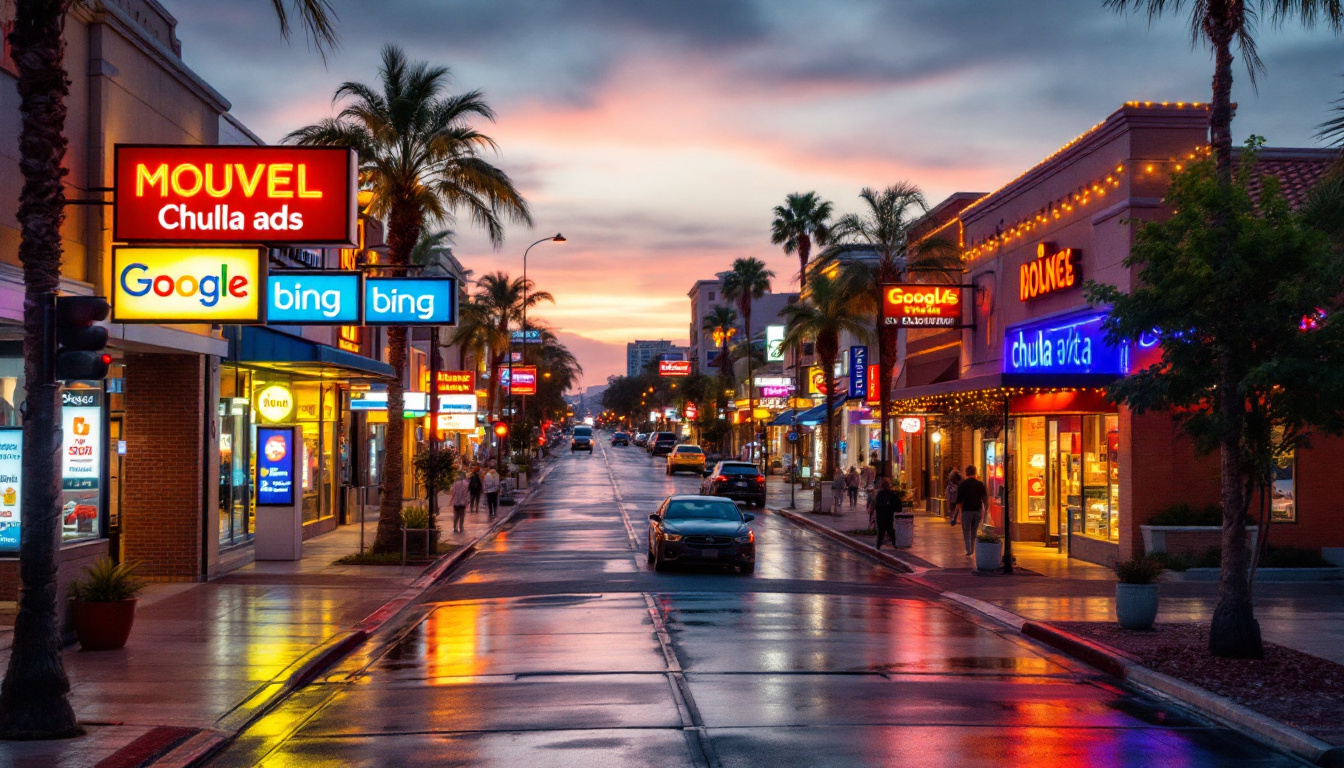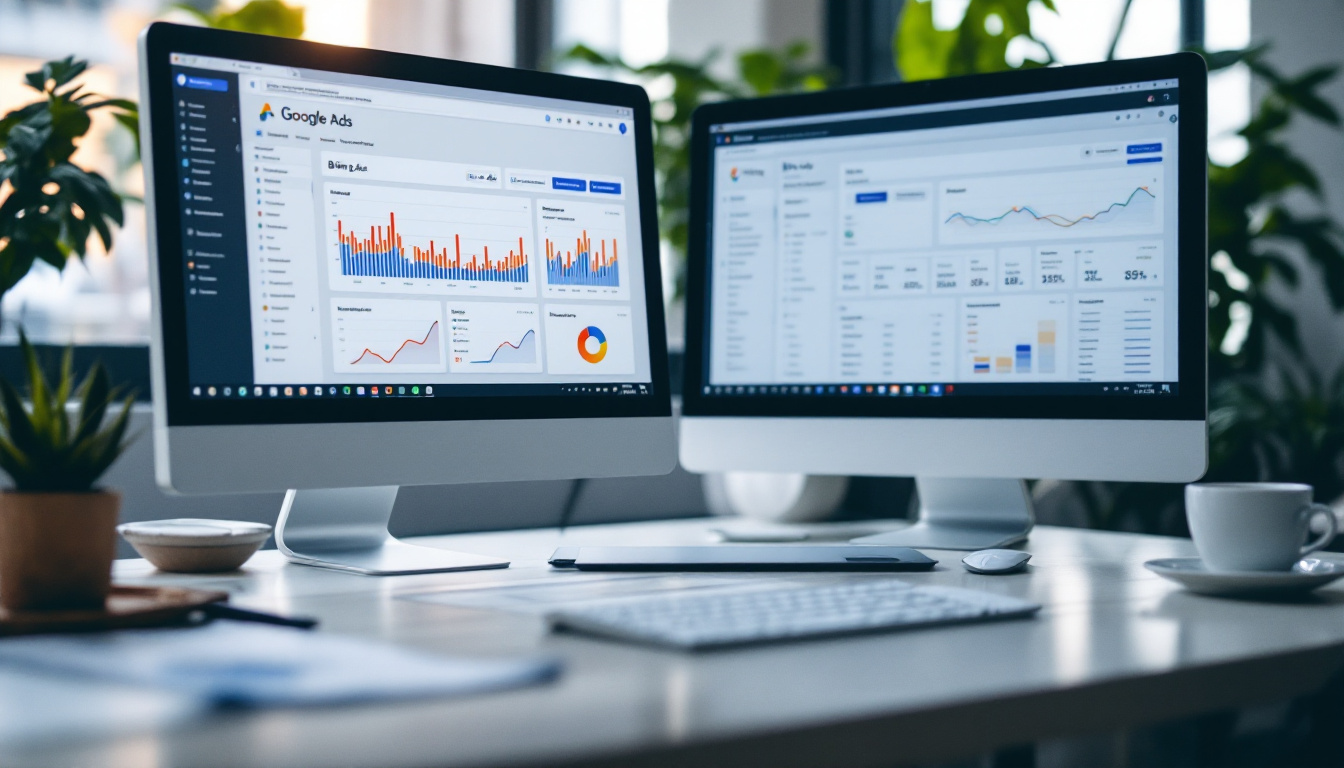Google Ads vs. Bing Ads for Chula Vista, CA Businesses: Which is Better?

In the digital age, advertising platforms like Google Ads and Bing Ads have become essential for businesses looking to increase visibility and attract customers. For businesses in Chula Vista, CA, understanding the nuances between these platforms can be the key to achieving online marketing success. This article will delve into the differences, demographics, costs, and effectiveness of both platforms.
Key differences between Google Ads and Bing Ads
When comparing Google Ads and Bing Ads, several fundamental differences emerge. Google Ads dominates the search engine market, holding approximately 92% of the global market share. This advantage means that ads on Google might receive a higher volume of impressions and clicks, providing an extensive audience reach. The sheer scale of Google’s user base allows advertisers to tap into a vast pool of potential customers, making it an essential platform for businesses seeking maximum visibility.

In contrast, Bing Ads holds a smaller market share but can offer advantages in specific demographics. Bing's user base tends to be slightly older and more affluent, which may appeal to businesses targeting these demographics. Moreover, cost per click (CPC) on Bing can often be lower than on Google, making it an attractive alternative for businesses looking to optimize their budgets. This lower CPC can translate into a higher return on investment (ROI) for advertisers who can effectively target their campaigns to reach the right audience.
Algorithm and Ad Placement Differences
The algorithms that dictate ad placements also differ significantly between the two platforms. Google utilizes a pay-per-click model that incorporates Quality Score, which evaluates the relevance of your ads, keywords, and landing pages. On the other hand, Bing has a similar model but uses a different scoring mechanism, often resulting in diverse ad placements even for similar campaigns. This variance can lead to unique opportunities for advertisers willing to experiment with their strategies on both platforms.
This difference in ad placement can lead to varied performance outcomes. For instance, a business may find itself paying less for effective placement on Bing while receiving less overall traffic compared to its Google Ads counterpart, where more searchers are active. Additionally, Bing Ads often allows for more granular targeting options, such as demographic targeting and device targeting, which can help advertisers tailor their campaigns more precisely to their desired audience. This capability can enhance the effectiveness of ads, particularly for niche markets or specialized products, allowing businesses to leverage Bing's distinct user base to their advantage.
Audience demographics for each platform in Chula Vista, CA
Understanding the audience demographics can help businesses in Chula Vista tailor their ad campaigns effectively. Google Ads appeals to a broader audience spectrum due in part to its global reach. However, in local contexts like Chula Vista, businesses might find that specific demographic factors play a crucial role. For instance, the diverse population of Chula Vista, which includes a significant Hispanic community, may influence the language and cultural nuances businesses incorporate into their advertising strategies. Tailoring ads to resonate with local customs and preferences can significantly enhance engagement and brand loyalty.

Bing Ads generally attract an audience that skews older, with a higher percentage of users aged 35 and older. A significant portion of these users holds a college degree, suggesting that for businesses in sectors like education or high-end retail, Bing might present an opportunity to connect with the right crowd. Additionally, the user interface of Bing tends to appeal to those who prefer a more straightforward search experience, which can be particularly advantageous for businesses offering services that require detailed information, such as financial planning or home improvement.
Furthermore, a sizable number of Bing users are more affluent, which can lead to higher conversion rates for products or services that are price-sensitive. In contrast, Google Ads may be more effective for businesses that cater to a younger demographic looking for immediate solutions. This younger audience is often more engaged with mobile devices, making it crucial for businesses to optimize their ads for mobile viewing to capture this segment effectively.
Behavior and Engagement Patterns
Engagement patterns also differ. Users on Google tend to engage more rapidly with ads, resulting in higher click-through rates (CTR). Bing users, while fewer in number, might be more disengaged, often conducting deeper research before deciding on a purchase. This behavior indicates that while Bing users may take longer to convert, they often make more informed decisions, which can lead to higher customer satisfaction and loyalty in the long run.
For businesses, understanding these engagement patterns can enhance ad copy and targeting strategies, ensuring that the right messaging reaches the right audience at the right time. For example, businesses might consider using more detailed and informative content for Bing Ads, appealing to the research-oriented mindset of its users, while adopting a more dynamic and visually appealing approach for Google Ads to capture the attention of quicker decision-makers. Additionally, leveraging retargeting strategies on both platforms can help businesses stay top-of-mind for potential customers, regardless of their initial engagement level.
Cost comparison: CPC and ROI
Cost considerations are critical when determining which platform is better for your business in Chula Vista. As mentioned, Bing Ads often boasts a lower CPC compared to Google Ads. For instance, the average CPC for Google Ads can hover around $2.32, while Bing can be around $1.54.
This pricing difference can significantly impact ROI. Businesses working with tighter budgets may find they can stretch their advertising dollars further on Bing, allowing for more ad impressions and clicks. This is particularly advantageous for small to medium-sized enterprises (SMEs) that need to maximize their visibility without overextending their financial resources. Additionally, the lower CPC on Bing may allow for experimentation with different ad formats and messaging, which can lead to more effective campaigns over time.
However, businesses should also consider the potential for higher returns on Google Ads due to its larger user base. An effective campaign may yield better results despite the higher cost per click. Google’s extensive reach means that ads can target a broader audience, which is especially beneficial for businesses looking to expand their market share. Furthermore, Google Ads offers advanced targeting options, including demographic targeting and remarketing, which can enhance the effectiveness of campaigns and improve overall ROI.
Evaluating Long-term Strategy
When analyzing CPC and ROI, it’s crucial for businesses to think long-term. A campaign that appears costly upfront may set the foundation for future growth and brand awareness. Therefore, while choosing a platform based on immediate costs is essential, long-term customer acquisition strategies should also factor into the decision. For instance, investing in Google Ads might yield a higher initial cost, but the potential for building a loyal customer base through effective brand messaging can pay dividends in the future.
Conducting A/B testing on both platforms can help businesses gather data on performance and adjust strategies accordingly. This approach not only fosters more informed decisions but also promotes more efficient budget allocation. By analyzing which ads perform better in terms of engagement and conversions, businesses can refine their messaging and targeting strategies. Additionally, leveraging analytics tools to track user behavior can provide insights into customer preferences, enabling businesses to tailor their campaigns for maximum impact. Over time, this data-driven approach can lead to improved ad performance and a more robust return on investment, regardless of the platform chosen.
How to choose the right platform for your business
Choosing the right platform between Google Ads and Bing Ads involves using data and understanding your business needs. Start by analyzing your target audience and their online behavior. If your ideal customer base aligns with the demographics that Bing targets, it may be the right choice for you.
Another key consideration is your marketing goals. If immediate visibility and lead generation are priorities, Google Ads might be better suited due to its extensive reach. Conversely, for long-term branding efforts in a niche market, Bing could prove to be effective while maintaining a lower cost.
Additionally, consider geographic targeting. For businesses that focus on local customers, running localized campaigns on both platforms can yield the best results.
Experimentation and Data-Driven Decisions
Ultimately, experimentation is critical. A data-driven approach allows businesses to test various ad creatives, keywords, and budgets across both platforms. Keep a close eye on the metrics and continuously optimize campaigns based on performance.
Utilizing insights such as conversion tracking and audience engagement statistics will guide you in fine-tuning your advertising strategy, allowing for adjustments in real-time.
Examples of businesses succeeding with both platforms
Several businesses in Chula Vista have successfully utilized both Google Ads and Bing Ads to achieve their marketing goals. For instance, a local health food store employed Google Ads to capitalize on search trends related to wellness and healthy living. This initial success encouraged them to explore Bing Ads, where they reached an older demographic interested in premium organic products.
Another case involves a tech service provider that initially focused solely on Google Ads but found significant success after diversifying into Bing Ads. This allowed them to connect with a segment of the market that preferred researching services on Bing.
These examples illustrate that leveraging both advertising platforms can maximize reach and impact, allowing businesses to cater to different segments of their audience effectively.
In conclusion, understanding the key differences and demographics of Google Ads and Bing Ads can significantly influence the advertising strategy for businesses in Chula Vista, CA. By carefully considering costs, audience engagement, and long-term goals, businesses can position themselves for success in the competitive digital advertising landscape.

As a Google Ads expert, I bring proven expertise in optimizing advertising campaigns to maximize ROI.
I specialize in sharing advanced strategies and targeted tips to refine Google Ads campaign management.
Committed to staying ahead of the latest trends and algorithms, I ensure that my clients receive cutting-edge solutions.
My passion for digital marketing and my ability to interpret data for strategic insights enable me to offer high-level consulting that aims to exceed expectations.